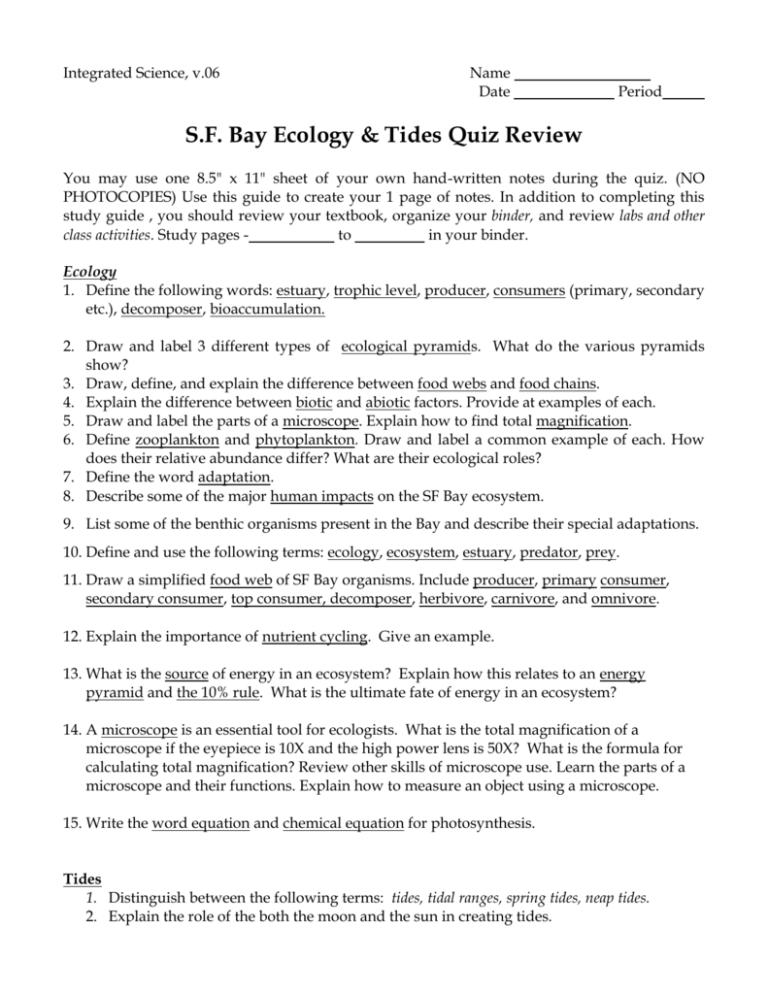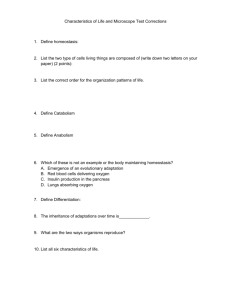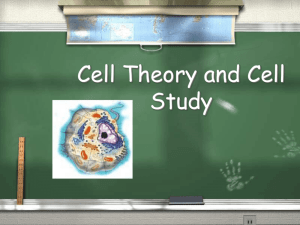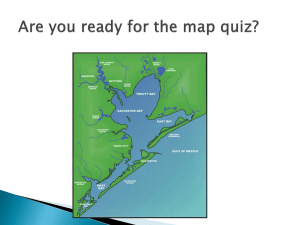SF Bay Ecology & Tides Quiz Review
advertisement

Integrated Science, v.06 Name Date Period S.F. Bay Ecology & Tides Quiz Review You may use one 8.5" x 11" sheet of your own hand-written notes during the quiz. (NO PHOTOCOPIES) Use this guide to create your 1 page of notes. In addition to completing this study guide , you should review your textbook, organize your binder, and review labs and other class activities. Study pages to in your binder. Ecology 1. Define the following words: estuary, trophic level, producer, consumers (primary, secondary etc.), decomposer, bioaccumulation. 2. Draw and label 3 different types of ecological pyramids. What do the various pyramids show? 3. Draw, define, and explain the difference between food webs and food chains. 4. Explain the difference between biotic and abiotic factors. Provide at examples of each. 5. Draw and label the parts of a microscope. Explain how to find total magnification. 6. Define zooplankton and phytoplankton. Draw and label a common example of each. How does their relative abundance differ? What are their ecological roles? 7. Define the word adaptation. 8. Describe some of the major human impacts on the SF Bay ecosystem. 9. List some of the benthic organisms present in the Bay and describe their special adaptations. 10. Define and use the following terms: ecology, ecosystem, estuary, predator, prey. 11. Draw a simplified food web of SF Bay organisms. Include producer, primary consumer, secondary consumer, top consumer, decomposer, herbivore, carnivore, and omnivore. 12. Explain the importance of nutrient cycling. Give an example. 13. What is the source of energy in an ecosystem? Explain how this relates to an energy pyramid and the 10% rule. What is the ultimate fate of energy in an ecosystem? 14. A microscope is an essential tool for ecologists. What is the total magnification of a microscope if the eyepiece is 10X and the high power lens is 50X? What is the formula for calculating total magnification? Review other skills of microscope use. Learn the parts of a microscope and their functions. Explain how to measure an object using a microscope. 15. Write the word equation and chemical equation for photosynthesis. Tides 1. Distinguish between the following terms: tides, tidal ranges, spring tides, neap tides. 2. Explain the role of the both the moon and the sun in creating tides. 3. Determine the # of high and low tides an area on earth experience in one day. Do these happen at the same times each day? Explain. 4. Describe in words what a graph of the tides looks like. How does the phase of the moon influence this graph?






